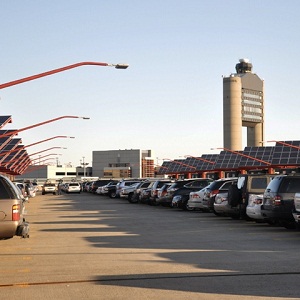Massachusetts grows solar industry with ARRA funds
 In the past two weeks, Massachusetts has unveiled more than 300 solar, clean energy and energy-efficiency projects that are completed or underway thanks to funding from the American Recovery and Reinvestment Act (ARRA) of 2009.
In the past two weeks, Massachusetts has unveiled more than 300 solar, clean energy and energy-efficiency projects that are completed or underway thanks to funding from the American Recovery and Reinvestment Act (ARRA) of 2009.
The projects and those funded through the state are fostering the budding solar and energy-efficiency industries in the state, while providing jobs as the state struggles to recover from the recession.
In the trio of recent announcements, the state announced that it spent $46.3 million of ARRA funds on renewable energy and efficiency projects throughout the state.
“There’s a whole host of positive impacts as a result of the stimulus dollars invested in Massachusetts,” said Mark Sylvia, Massachusetts’ commissioner of energy resources. “I think there are a number of benefits that we’ll get out of it that will exceed what was put into it.”
For instance, the funds are helping spur and expand renewable energy markets, Sylvia said. They’ve also created more jobs for solar installers and developers as well as making more projects available.
“We were able to fund projects from the tip of Cape Cod to the Berkshires—from the easternmost part of the state to the westernmost part,” he said. “All of the ARRA projects we were able to fund have enabled communities to reduce energy use.”
The funding was also used to supplement existing state renewable energy programs, according to Sylvia and garnered private and other public funding that far outpaced the federal investments. For instance, the $23.6 million invested in Northeastern Massachusetts, including Boston, helped the region leverage $143.6 million in additional clean-energy funding.
The bulk of the renewable energy financing was for solar, Sylvia said. But the money was used to support some other forms of renewable generation, though it did not directly support any wind projects.
In all, the state’s use of ARRA funds supported the installation of about 14 megawatts (MWs) of solar throughout the state. Funds dispersed through the Massachusetts Clean Energy Center, a quasi-public agency, supported about 7.5 MWs of the projects Sylvia said.
“They also did solar photovoltaics at a number of state facilities; that was about 2.7 MWs,” he said. The rest, 2.6 MWs, were developed at smaller municipalities with 35,000 residents or less, through the block grant program under ARRA.
The majority of the rest of the funds were invested in energy efficiency projects throughout the state.
“The energy-efficiency projects will lead to a reduction of half a million MMBTUs [i.e., one million British thermal units] through stimulus dollars,” Sylvia said. “In those cases where municipalities received grants—what they will do with the real life savings is to fund other priorities or use the savings for other projects.”
Image courtesy of Massachusetts Port Authority.



